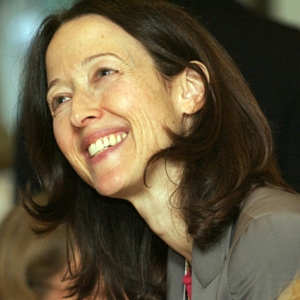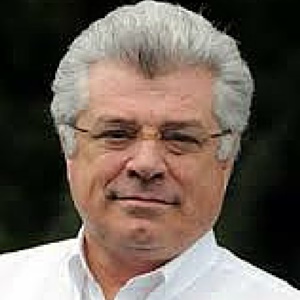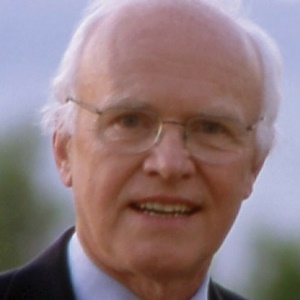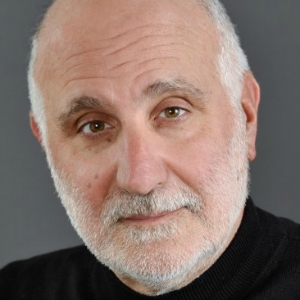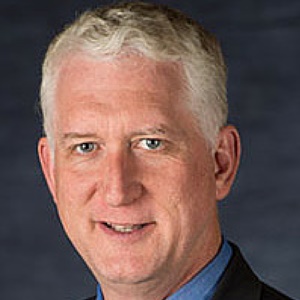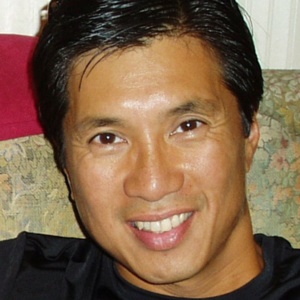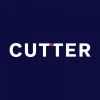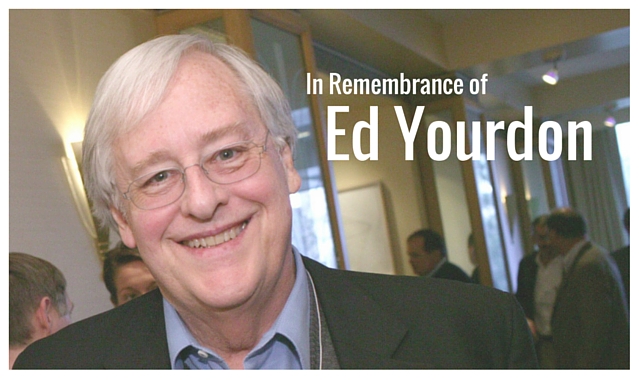
Our friend and colleague Ed Yourdon passed away unexpectedly on January 20. Ed was a guru’s guru. As you’ll discover in these tributes by several members of the Cutter family, Ed had a profound impact on many, many lives. We welcome you to add your stories and memories to this collection in the comments section below. Rest in peace, Ed.
As many of you will know by the time you read this, Ed Yourdon died last week. He was a pioneer in software engineering, author of 26 computer books and hundreds of computer articles, a prominent consultant and lecturer, and, here at Cutter, founder and longtime Editor of what is now known as Cutter Business Technology Journal. Ed also cofounded the Consortium part of Cutter, authored many Cutter technology journals, and wrote thousands of Cutter email advisors. Most importantly, Ed was a great friend to all of us. His influence on Cutter’s mission and values endures.
My first encounter with Ed was at a CASE conference. He had just delivered a brilliant keynote that, true to form, was as entertaining as it was insightful. Admirers swarmed him like a rock star, so it was not until one of the last sessions that I was able to grab a seat next to his and approach him. My reason for tailing Ed was to discuss his monthly journal, American Programmer, which he had launched following the sale of Yourdon, Inc. I was a fan, and I thought Cutter could be a terrific future home for this exceptional publication.
American Programmer addressed all the key issues facing the software industry at the time, but in a revolutionary format. Ed focused each issue on a single topic, beginning with a call for papers that generated thoughtful, and sometimes controversial, contributions from around the world. This was pre-Internet, so the international perspective was unique. Painstaking editing by Ed’s wife, Toni Nash, transformed brilliant articles that had been a challenge to read into lucent, beautifully crafted pieces. And Ed gave perspective to the differing viewpoints, drawing conclusions and identifying trends for the diverse and global readership.
Before I had the good fortune of getting to know Ed, I thought it odd that a journal with readers and contributors worldwide, covering issues of interest to IT executives, was called “American Programmer.” But I came to understand that it made total sense. Ed was always on the side of the person in the trenches. When students or programmers wrote to Ed seeking advice, he invariably took time to answer them in detail, to encourage them, to invest the effort someone else would have reserved for an important thought leader or client. Ed was a mentor to all.
It was everyone’s good fortune that Ed continued on as Editor for many years of what we together renamed Cutter IT Journal. When he finally decided he was ready to transition to Editor Emeritus, we realized Ed was irreplaceable. No one had the same deep understanding of such a diverse range of technology topics, coupled with his level of intellectual curiosity, passion, and extraordinary writing skills. There was no one who could take Ed’s place. That’s when the Journal began its current tradition of using an expert Guest Editor for each issue.
Cutter Business Technology Journal continues to be one of Cutter’s most popular research vehicles, thanks to Ed’s inspiration. We owe so much to Ed, not only for the Journal, but equally for his role in helping to shape so many of our products and services. Yet despite his many contributions, what we all remember most is Ed’s kind and generous nature, his wit and humor, his perfect prose, and his great wisdom — about life and everything IT. Thank you, Ed, for all you gave us.
— Karen Coburn
I met Ed Yourdon for the first time in the late summer of 1975. I was working in downtown Manhattan and saw an ad in Computerworld, when Computerworld was a printed tabloid, for a “Structured Design” workshop to be led by Ed Yourdon in the Yourdon offices in midtown. The ad promised a pre-publication copy of the book Structured Design by Yourdon and Larry Constantine to every participant. I signed up immediately.
Having been a protégé of Mike Jackson, the English software design genius, I was eager to see and hear what Ed was up to. I can remember it was a three-day workshop with maybe 12-15 participants. On the first day, I wore my downtown New York uniform: a suit and tie. Ed walked in wearing slacks and a light sweater, and I think I remember that the sweater had a small hole at one of the elbows. Right away, I knew I liked this guy. No suit for me for the next two days! Lunch was brought in for the class, and Ed would sit and talk with everyone as we dined on pizza or sandwiches.
It was a great class and at its end I gave it the highest marks on my evaluation sheet, thanked Ed, and headed home. That night I got a call from Ed. He offered me a job as a Yourdon consultant/instructor. After tying up my responsibilities downtown, in October 1975 I became Employee 8. I was 25 and Ed took a shot on me; it turned out he gave me the biggest leap I ever had in my career.
I reported to P.J. “Bill” Plauger who had come to Yourdon from Bell Labs. With Brian Kernighan, he had coauthored Elements of Programming Style in 1974. I never knew how Ed got Bill to join him. All of a sudden, I was swimming with some very large fish, yet Ed and Bill never treated me like a minnow. In training, I spent most of my time on the road with Ed, giving courses to client companies and consulting on projects trying to master Structured Design for the first time on real projects. I soon started to teach by myself, and by Spring of 1976, I was off to Australia on a Structured Programming/Structured Design lecture tour, thanks to Ed who convinced the Australian agent, Dennis Davie, that I could handle it all with ease.
The company was doing well and Ed was growing it. Bill took over the new software development group, and Ed opened his wallet and we got a PDP 11 with Unix. I think we had the first commercial license for Unix. Soon, Ed started Yourdon Press because he was frustrated by the book publishing industry’s slow pace. I became head of the consultants/instructors. Tom DeMarco became a full-time contractor. Steve McMenamin, John Palmer, Ira Morrow, Brian Dickinson, Pat Duran, Lou Mazzucchelli, Becky Winant, James and Suzanne Robertson, III, and Matt Flavin joined the staff. I am sure I have missed many more whom I should include on this list.
To Ed’s great credit, the man whose name was on the door, the man with the highest technical credentials, never made himself CTO. Technical ideas met a trial by jury of peers, and Ed made it clear that he was a peer, and that was it. Everyone was encouraged to improve our knowledge base, to improve courses, to invent new ones, to write articles, and to write books. Ed had given the inmates the keys to the asylum. It was a courageous move. Yourdon Press published a book on Structured Analysis by Victor Weinberg along with a very different take on Structured Analysis by Tom DeMarco. Let the best ideas win. Yourdon Press published Essential Systems Analysis by Stephen McMenamin and John Palmer, Fundamental Concepts of Information Modeling by Matt Flavin, and the process-data battle had been joined. It was such an intellectually exciting place to be.
And all along it was Ed Yourdon’s place. Thank you, Ed. It was the best time of my life.
— Tim Lister
I think of Ed first and foremost as a dear friend. We started working together in the late 1960s at Mandate Systems in New York. So ours was a friendship of nearly 50 years. During this entire time, I have the sense that Ed never missed a chance to do me a good turn. He critiqued and encouraged writing of mine, and much later, hastened to be the first to offer up a thoughtful review of anything I published and get his review placed optimally to be seen by as much of its market as possible. He helped me shape course material and arranged for my courses to find their niche in the marketplace, always with the most generous imaginable royalty. In fact, “generous” is a word I will always associate with Ed.
We often traveled together. The first time he surprised me by springing for a two-bedroom parlor suite at the Mandarin Hotel in Hong Kong, so we had a common living room between us. And it was there that I first became acquainted with his personal writing habits. The man wrote at typing speed. And he was one of the fastest typists I’ve ever known. What he mostly wrote were letters. A letter from Ed — in spite of how quickly he produced it — was almost always charming, humorous, and gracefully organized. I still have many of them to comfort me at this time of loss.
All this has been highly personal. Ed also accomplished extraordinary things in his all-too-short stay on Earth. I expect others will write of his accomplishments, but I will toss in one observation: Ed was the conduit through which many new and valuable practices found their way from academia to industry. Most of us had never heard of Dijkstra, Parnas, Mills, Hoare, Boehm, Basili, Dahl, Fagan, or Nygaard, until we learned of their work from Ed. “Here, read this,” from Ed would often open us up to insights that were simply not yet incorporated into the state of practice in the software world. Academics sometimes grumbled that he was a mere “populizer,” that he was piggybacking on the work of others rather than supplying invention of his own. Yet, their best ideas might have never made their way into general use without Ed. And, of course, he was scrupulous about crediting good breakthrough work to the people who had made the breakthroughs. A win-win for everyone: for the software industry because its practice improved and for academics because their work became better known. Ed was not a mere anything; he was a catalyst for the maturing of our entire industry.
— Tom DeMarco
Ed was a pioneer — and a steadfast one — for decades. And he adapted to changes in the SDLC world — a world he helped create — in creative, professional ways. His writings and ideas were clear and insightful. I often smiled and nodded when reading his work, and I seldom do either. Smart guys are always missed. Ed will be missed.
We will also miss his photographs: the second field he “structured.”
Yourdon is one of those names that becomes a noun and a verb among lots of short-lived shouting about nothing. Ed may be gone, but Yourdon lives.
— Steve Andriole
As we move through life, we constantly meet people, and each new person has some influence on us. Sometimes the influence is minor (you meet someone who tells you about an interesting movie); sometimes the influence is major.
Ed Yourdon was a major influence. Our lives changed radically by meeting Ed. Our careers changed to something we had never envisioned. Our ideas were modified by Ed’s ideas. Our enthusiasm for our work changed because of Ed’s enthusiasm for his. In short, some of Ed rubbed off on us, making us different (we would like to think more interesting) people.
We can never know how many thousands of people met Ed. But we can know that almost every one of those people has been changed, inspired, educated, or in some way improved by Ed Yourdon. May he rest in peace.
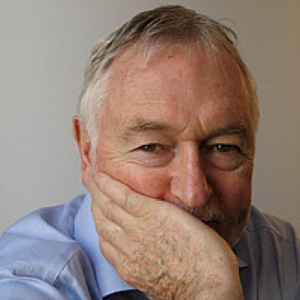
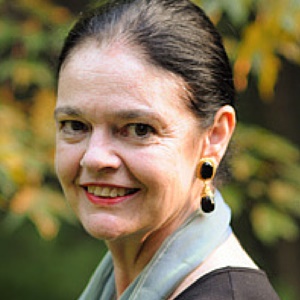
— James and Suzanne Robertson
It was with great sadness that I learned of the passing of Ed Yourdon. In my opinion, Ed had broader, deeper, and more profound impact on information technology and the world than any other single individual. He contributed greatly to the ability of systems analysts to develop specifications, programmers to develop useful code, and companies to implement systems that enabled profound business change. Throughout his career, Ed made major contributions to the advancement and sophistication of systems development.
While I could write extensively about Ed’s contributions to the art and science of software and systems development, I think a more important contribution was his impact in preventing a global software disaster. The entire developed world owes Ed a huge debt of gratitude for his electrifying books and articles warning of the potential catastrophic consequences of Y2K — the year 2000. Most programmers were acutely aware of the potential disasters lurking in the software that had been developed in the 30 years prior to Y2K. Despite many pleas to management, programmers were universally denied the time and budget to fix the software time bombs. It was a common joke among older programmers that they would retire in 1999 before the clock struck midnight on December 31.
Ed’s was profoundly effective at putting the press, governments, business leaders, and investors on notice. The worry and concern shared by programmers became an impending crisis in the minds of those who had to allocate resources to the remediation of problematic computer systems. Without Ed’s articulate and compelling books, interviews, and articles, the world would not have turned to the monumental task of fixing critical software. In fact, the Y2K disaster was so effectively averted that ignorant people questioned whether the problem had ever existed. Those of us responsible for large-scale systems, particularly those systems that controlled critical infrastructure, know that the mess of unmitigated systems would have likely resulted in death and destruction, which would have set countries and the economy back decades. Ed was the unsung hero who literally rescued the world from unimaginable disaster. I don’t believe he ever received the recognition and gratitude he deserved for his vigilance and persuasive voice that moved the entire world to action. Perhaps with his passing, we can all thank our lucky stars for the brilliant Ed Yourdon.
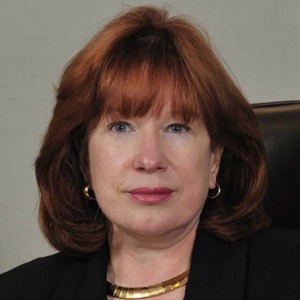
— Lynne Ellyn
Upon first meeting Ed, I must confess that I was more than a little bit in awe. Not many people I’ve met have diagrams named after them, and I had begun my career preaching the wisdom of his approach to designing computer systems. As I got to know him better, though, “Ed the legend” receded and “Ed the man” impressed me even more. He was thoughtful on so many issues and equally curious about so many things.
Years ago, when I joined the Cutter Trends Council, Ed was beginning to withdraw from the activities of that group. Luckily, I had the good fortune to overlap with him for a while. From that time, over many years, I enjoyed informal contacts with him, mostly via email, on a variety of topics. He was someone I consulted for advice, and he always took the time to offer it.
At one point, he and I worked on a consulting project together. Neither of us had any idea what we were getting into, but as it turned out, the company we were working for — a small company that has since vanished into history’s dustbin — had some ethical shortcomings that Ed and I agreed were seriously alarming. We hadn't seen it coming and were both shocked when we realized what these entrepreneurs were planning — and that they intended to involve us in it. It was a tense situation, but Ed kept his cool, and helped me keep mine. Working together, drawing mainly on Ed's wisdom, we were able to extract ourselves from the situation, without betraying our duty to a client and without going down the ethically questionable road that our clients intended. It was very difficult, very delicate, and an amazing learning experience for me, if a bit harrowing.
More recently, I became Facebook friends with Ed, which has allowed me to enjoy his talent of photography, something he seemed increasingly enthusiastic about. His photos of people in and around New York City, often posted to Facebook, exhibited the same thoughtfulness, curiosity, and wisdom that I had come to expect from Ed.
Rest in peace, Ed. We will miss you a lot.
— Rob Austin
Ed Yourdon was one of my favorite professional “goduncles” for whom I felt a special kinship ever since we first met in my mid-20s.
Perhaps it was because of his kindness, or the fact that we were both native New Yorkers. Maybe it was also having studied in Boston at places like MIT and Tufts, or enjoying NYC street photography as a way of storytelling and observing life, which clearly is a key element of Humans of New York on social media. Perhaps it was that folks like us shared a passion to help change the world, or at least change the way our companies worked — to advance the betterment of our teams, our products, or society.
Whether it was some, or all of these, Ed was one of my most trusted mentors. I recall being terribly nervous about starting my own firm and consulting practice at the age of 27. I had no idea what I was doing, but Ed cheered me on. He told me that I had something valuable to say and encouraged me to take risks. It was because of people like Ed, Tim Lister, Tom DeMarco, Roger Pressman, and a small handful of “elders” at the time that I felt inspired to leave the relative safety of corporate life and venture onto the lecture circuit, writing and speaking about Big Ideas, whether it was about preventing “Death March” projects doomed to fail, managing the impacts of outsourcing/offshoring, measuring the success of teams and software project estimation, or getting far enough ahead of Y2K problems before they risked blowing up our collective faces, and, in more recent times, Agile methods.
That was what was so inspiring about Ed. A prolific writer with Big Ideas, mutual longtime friend Tim Lister once referred to Ed as “a man who has never had an unwritten thought.” Imagine how honored I felt when Ed asked me to write for his American Programmer journal. I was never more excited about making an impact. American Programmer would later become Cutter IT Journal, marking the beginning of my long, trusted relationship with Cutter Consortium and many former Yourdon Inc. thought leaders.
Long before TED Talks, for more than six years without fail, Ed and I would meet in Camden, Maine, over a beautiful autumn weekend where our colleague Tom DeMarco often served as master of ceremonies for the PopTech conference. It was a pilgrimage of Big Ideas, where we’d hobnob with folks like Bill Joy of Sun Microsystems, Carolyn Porco of JPL/NASA, John Sculley (former CEO of Apple prior to Steve Jobs’s return), and countless other leaders in the field. I’ll always remember sitting with Ed among the front rows, marveling at the implications of talks that unfolded around us, about which we’d feverishly write and expound upon as we continued our merry march through the lecture circuit.
I will miss the notion of sharing Big Ideas with Ed Yourdon. But most of all, I will miss his kind smile and gentle soul.
— Michael Mah
I confess that I was devastated to hear of Ed Yourdon’s untimely death. Ed and I had been friends since college as members of MIT’s class of 1965. He graduated on time, but I took a detour and graduated two years behind him. I had, in the meantime, started my first company, a corporation founded on the synergy of training, consulting, and publishing. Sound familiar? I convinced Ed to teach a class for us on real-time systems design and to prepare an accompanying text to be released by my company’s publishing arm. To help keep him on track with his writing and editing, my wife and I would have him over for dinner at our tiny Watertown apartment. We would finally sit down to eat only after he had cranked out another chapter. The first of Ed’s more than two dozen books was an edited collection — four of twelve chapters were his original contributions — published by Information & Systems Institute. That was 1967. Ed reversed roles and returned the favor a few years years later by coming on board as co-author for my own stalled writing project. The first edition of Yourdon and Constantine, Structured Design, was published under his Yourdon Press imprint — the 1975 paperbound “Orange Book,” now a collector’s item — and he steered the negotiations that resulted in the “Green Book” from Prentice Hall.
Through his work and that of the amazing team he assembled around him at Yourdon, Inc., structured design spawned structured analysis and stimulated diverse innovations in software design and development. When Ed generously stepped in to facilitate my return to the world of IT in the late eighties, methods had become a full-blown industry, and Ed was already on the ramparts of the next revolution, leading the charge for object-oriented methods.
Over the years, Ed and I remained both friends and good colleagues. He will be remembered by most for his work and his writing, which is fitting. He was a prolific author and a central figure and motivating force behind at least two revolutions in software that helped the field transform from a craft to a profession. I will remember him, though, for his unflagging wit and good humor and for his deep generosity. May his memory be a blessing.
— Larry Constantine


